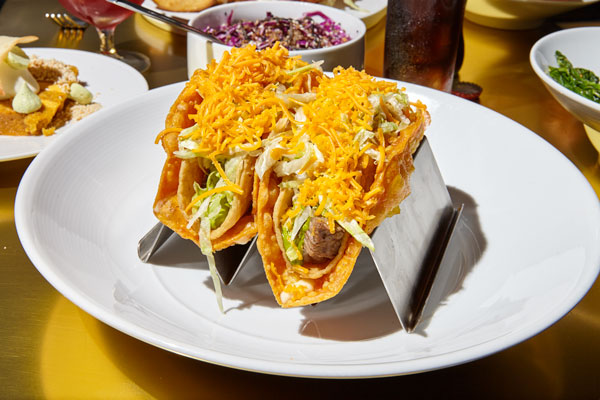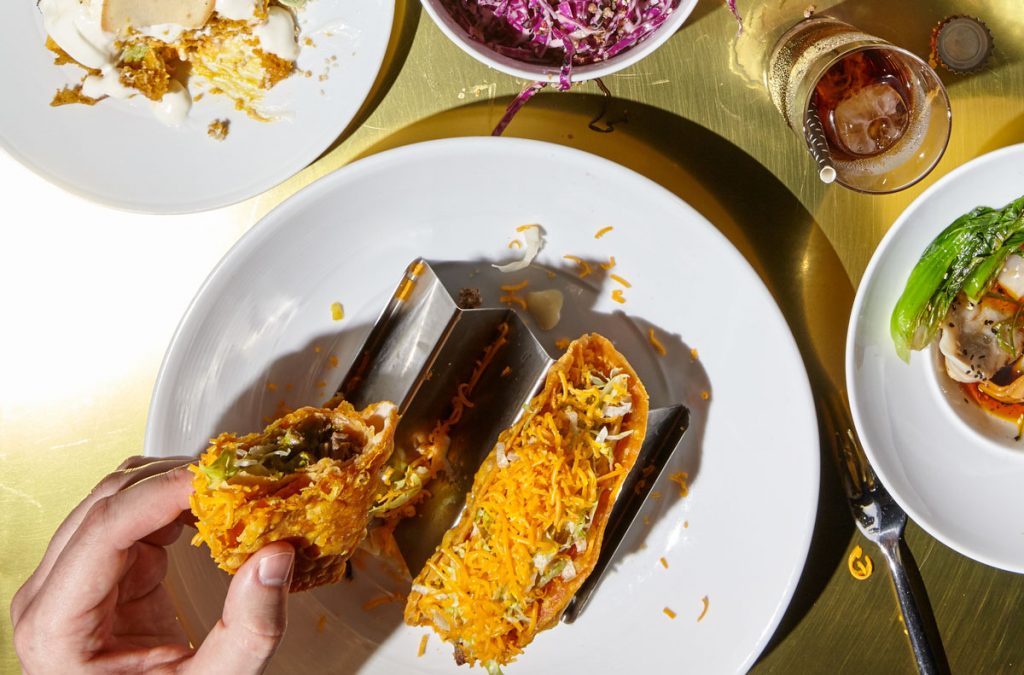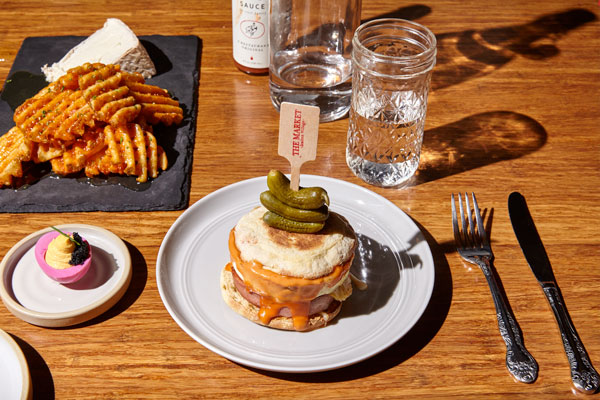Classy Trashy: Fast-food classics inspire upscale creations

For better or worse, fast food is something of a Midwestern tradition (and who are we kidding—it’s probably for the worse). While often viewed as a guilty pleasure in today’s increasingly health- and fitness-minded society, fast food chains still dominate much of our landscape—not to mention our diets.
In many households, it’s the simple and easy option for busy working parents. For others, it’s the best you can do for the price. Unpretentious, easily-accessible, ready when you are—fast food remains a familiar touchstone for millions.
When he opened Service Bar, Chef Avishar Barua wanted to bring that same approachability to the food on his menu. “We were trying to make dishes that I had a lot of experience with, but it’s hard to translate some of that experience into a dining room,” Barua remembers. “I grew up in the Midwest, and I know how hard it is to get my family to eat stuff.”
This is where tinkering at Taco Bell some years before came in.
“When I found out about the Cheesy Gordita Crunch I thought that was the coolest thing in the world,” Barua explains. “That’s everything—every contrast you want, every flavor. I thought it would be really cool if you put it in a Doritos Locos shell.”

The Dorito-infused gordita he conceived of that day became Baura’s go-to order when visiting the ostensibly-Mexican-themed fast-food chain. Later, it served as the inspiration for one of Service Bar’s most iconic menu items—the Cheesy Brisket Crunch.
“At face value, it seems like an upgraded version of the Taco Bell taco,” says Barua of Service Bar’s take on the fast-food standard.
Featuring house-smoked brisket, Barua’s creation mimics its fast-food counterpart with a South American-inspired sauce of serano and nora chiles, smoked cheddar from Middlefield Original Cheese co-op, and shredded iceberg lettuce—all in a hard shell made with Columbus’ own Koki’s Tortillas. To reproduce the Gordita’s signature outer shell, Barua looked to the traditional Bengali frybread of his youth—a staple in his mother’s cooking.
“We’re trying to recreate that memory of biting into that super-crunchy taco, with all these things encapsulated from all these experiences into one very identifiable dish.”
Barua’s approach to cooking centers on creating points of entry through familiar presentations. In his kitchen, there is no clear distinction between high-end cuisine and lowbrow junk food. There is only good, and not good.
“People will always bring up ‘modern cooking’ or ‘fusion cooking’ —it’s just cooking, man,” says Barua. “You can just say, ‘I think this is food that I’d like to eat, and I want to make it and try to translate it.’ ”
BROUGHT TO YOU BY
This view is shared by A&R Creative Group head chef Tyler Minnis, who incorporates upscale twists on fast-food favorites on the menu at The Market Italian Village.
Chef Minnis has found that fast-food presentations can serve as useful points of access for patrons when it comes to some of the market’s more formidable offerings.
“I think it’s an easier way to introduce certain ingredients to people that they might not normally be adventurous enough to try,” Minnis explains. “You might see something and say, ‘Oh, I know what that is, and I like it, so why not try the rest of it?’ ”

It was this approach that led to the creation of one of the standout items on the Market’s brunch menu. With a thick-cut slice of mortadella in place of the Canadian bacon and the funky goodness of taleggio replacing the usual slice of processed American, The Market McMuffin improves dramatically on its counterpart from the golden arches.
In addition to making upscale ingredients accessible to the masses, Chef Minnis finds that fast-food twists help to keep the tone of the menu light.
“Myself and my staff take this stuff very seriously, but at the same time, we try to have fun with it,” Minnis explains. “If not, there’s not really any reason to be cooking. You might as well do something else.”
For these chefs, dishes such as these constitute more than just a cheeky highbrow take on supposedly lowbrow food options. They are a valuable resource in encouraging diners to test the limits of their palates through forms they are already comfortable with. What’s more, these dishes represent an expression of one of the Midwest’s most authentic food traditions.
“We were once classified by Anthony Bourdain, R-I-P, as a place that was a bunch of strip malls separated by Applebees,” chef Barua says. “That’s what he said about Columbus, Ohio. And you know what, maybe we are, but it’s cool. We can all identify with things here. We can all have memories, and we’re not pretentious assholes.”
BROUGHT TO YOU BY



